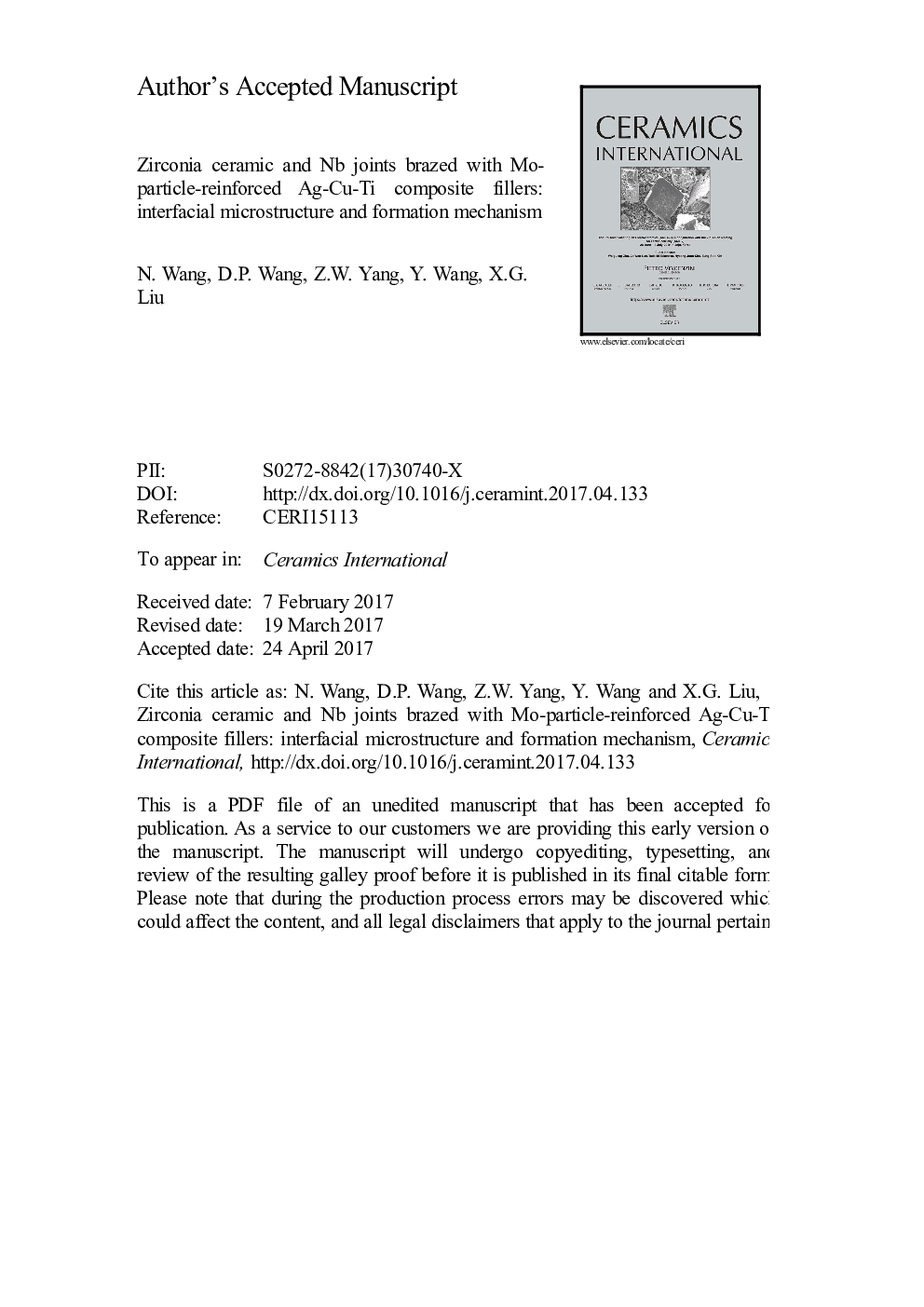| Article ID | Journal | Published Year | Pages | File Type |
|---|---|---|---|---|
| 5437612 | Ceramics International | 2017 | 28 Pages |
Abstract
Zirconia (ZrO2) ceramic and Nb were successfully brazed using a Mo-particle -reinforced Ag-Cu-Ti composite filler. The effect of the Mo content of the composite filler on the interfacial microstructures and mechanical properties of ZrO2/Nb-brazed joints was investigated. The calculated Ti activity initially increased and then decreased as the Mo content was increased from 1 to 40Â wt%, and played a decisive role in the evolution of interfacial products formed adjacent to the ZrO2 ceramic. When 40Â wt% Mo particles were added to the composite filler, TiO+Ti3Cu3O reaction layers formed adjacent to the ceramic substrate. By decreasing the Mo content of the filler, the TiO layer became thinner or even vanished, whereas the thickness of the Ti3Cu3O reaction layer increased gradually with decreasing Mo content. Concurrently, a bulky TiCu compound grew near to the ZrO2 ceramic, and further fine TiCu particles were observed in the brazing seam. This microstructure evolution, as well as the mechanism for the formation of joints brazed with composite fillers of differing Mo content, is discussed based on TEM analyses. The shear strength of the brazed joint is clearly improved when a suitable amount of Mo is added to the Ag-Cu-Ti filler. A maximum shear strength of 370Â MPa was obtained when ZrO2/Nb joints were brazed with Ag-Cu-Ti+5Â wt% Mo composite filler.
Related Topics
Physical Sciences and Engineering
Materials Science
Ceramics and Composites
Authors
N. Wang, D.P. Wang, Z.W. Yang, Y. Wang, X.G. Liu,
